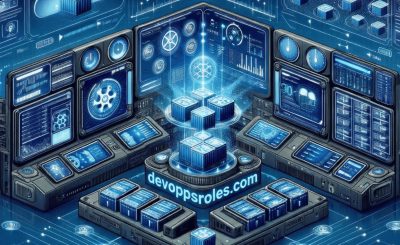Table of Contents
Introduction
In Kubernetes, a common issue that administrators encounter is when Pods Stuck in Pending State error. This state indicates that the pod cannot be scheduled onto a node, often due to resource constraints or misconfigurations. Resolving this issue is crucial for maintaining the availability and performance of your applications.
In this guide, we’ll explore the reasons why pods might be stuck in the Pending state and provide step-by-step instructions on how to fix this issue. We’ll cover both basic troubleshooting steps and more advanced configurations.
Understanding the Pending State in Kubernetes
What is the Pending State?
In Kubernetes, a pod remains in the Pending state until it is successfully scheduled on a node. The scheduling process involves finding a suitable node that meets the pod’s resource requirements and constraints. If no suitable node is available, the pod remains in the Pending state.
Common Causes of Pods Stuck in Pending State in Kubernetes
- Insufficient Resources: The most common cause of pods being stuck in Pending is a lack of resources (CPU, memory, etc.) on the available nodes.
- Node Selectors and Taints: If a pod has specific node selectors or the nodes have taints that prevent the pod from being scheduled, it will remain in Pending.
- Persistent Volume Claims (PVCs): If a pod requires a PVC and the storage class is not available, the pod may be stuck in Pending.
- Pod Quotas: Resource quotas at the namespace level may prevent new pods from being scheduled.
Basic Troubleshooting Steps
1. Check Resource Availability
First, verify if there are sufficient resources available on the nodes for the pod.
kubectl describe pod <pod-name> -n <namespace>Look for the Events section at the bottom of the output. If you see messages like “Insufficient CPU” or “Insufficient memory,” this indicates that there are not enough resources available.
2. Inspect Node Selectors and Taints
Review the pod’s specifications to ensure that node selectors or tolerations are configured correctly.
kubectl describe pod <pod-name> -n <namespace> | grep -i "nodeSelector\|tolerations"Check the nodes to see if they match the pod’s node selector or if there are any taints that might prevent scheduling.
kubectl describe node <node-name> | grep -i "taints"3. Verify Persistent Volume Claims
If your pod is using a Persistent Volume Claim (PVC), ensure that the PVC is correctly bound and that the storage class is available.
kubectl get pvc -n <namespace>
kubectl describe pvc <pvc-name> -n <namespace>If the PVC status is Pending, the pod will not be scheduled.
4. Check Resource Quotas
Ensure that your namespace has not exceeded its resource quotas, which could prevent new pods from being scheduled.
kubectl describe quota -n <namespace>Advanced Troubleshooting
1. Resource Requests and Limits
Ensure that the pod’s resource requests and limits are realistic. Over-provisioning resources can lead to pods being stuck in Pending because Kubernetes cannot find a node that meets the excessive requirements.
resources:
requests:
memory: "64Mi"
cpu: "250m"
limits:
memory: "128Mi"
cpu: "500m"2. Cluster Autoscaler
If your cluster frequently experiences resource shortages, consider enabling the Cluster Autoscaler. This tool automatically adds nodes to your cluster when resources are insufficient to meet pod scheduling demands.
kubectl get deployment -n kube-system cluster-autoscaler3. Preemption and Priorities
Kubernetes allows configuring priorities for pods. If your important pods are stuck in Pending, consider using preemption to evict lower-priority pods and free up resources.
priorityClassName: high-priority4. Custom Scheduling Constraints
For complex scenarios, you might need to define custom scheduling constraints using affinity and anti-affinity rules.
affinity:
nodeAffinity:
requiredDuringSchedulingIgnoredDuringExecution:
nodeSelectorTerms:
- matchExpressions:
- key: kubernetes.io/e2e-az-name
operator: In
values:
- e2e-az1Frequently Asked Questions
1. How do I know if my pod is stuck due to resource constraints?
Use the kubectl describe pod <pod-name> command to check the Events section. Look for messages indicating “Insufficient CPU” or “Insufficient memory.”
2. Can I manually assign a pod to a node?
Yes, you can use nodeName in your pod spec to manually assign a pod to a specific node, though this is generally not recommended as it bypasses Kubernetes’ scheduling logic.
3. What is a PVC and how does it affect pod scheduling?
A PVC is a request for storage by a pod. If the requested storage is not available, the pod will remain in Pending until the storage is allocated.
4. What happens if a node fails after a pod is scheduled?
Kubernetes will automatically attempt to reschedule the pod on a different node if the original node becomes unavailable.
Conclusion
Dealing with pods stuck in the Pending state is a common challenge in Kubernetes. By following the steps outlined in this guide, you can effectively troubleshoot and resolve the underlying issues, ensuring that your pods are scheduled and your applications run smoothly. Whether you’re facing resource shortages, misconfigurations, or advanced scheduling constraints, the solutions provided here will help you get your Kubernetes cluster back on track.
Remember, maintaining a healthy Kubernetes environment requires ongoing monitoring and adjustments as your workloads and infrastructure evolve. Stay proactive, and you’ll minimize the chances of encountering pods stuck in the Pending state.
This guide should serve as a comprehensive resource for fixing pods stuck in the Pending state in Kubernetes, addressing both common and advanced scenarios. The aim is to provide actionable insights that help Kubernetes administrators ensure smooth pod scheduling and overall cluster health. Thank you for reading the DevopsRoles page!
